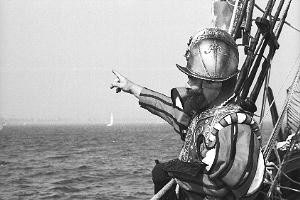| Error processing SSI file |
||
| Error processing SSI file |
||
| Error processing SSI file |
||
Error processing SSI file |
About Marine Protected Areas
Cabrillo National Monument
Juan Rodriguez Cabrillo, who led the first European expedition to explore what is now the West coast of the United States. Cabrillo National Monument is named after Juan Rodriguez Cabrillo, who led the first European expedition to explore what is now the West coast of the United States. Cabrillo departed in his flagship, the San Salvador, from the port of Navidad, Mexico on June 27, 1542 and three months later arrived at what is known today as San Diego Bay. Cabrillo would later die during the expedition, but his crew continued on, and possibly made it as far north as Oregon. It is believed that winter storms forced them to head back to Mexico. The monument was established in 1913 to commemorate Cabrillo's voyage of discovery. A statue of the explorer looks out over the San Diego bay. A unique part of the Cabrillo National Monument experience is the incorporation of living history into the monument. Living History Interpreters wander around the park, lighthouse or Military History Exhibit portraying people involved in the great Spanish expeditions of the 1500s, among others. The interpreters discuss clothing, armor and weaponry of sailors and soldiers, helping visitors relate their lives to those of the men who came ashore on this land in 1542. Women even have the opportunity to try on women's clothing worn 450 years ago! Did you know?
Learn more/get involved:
|
|
